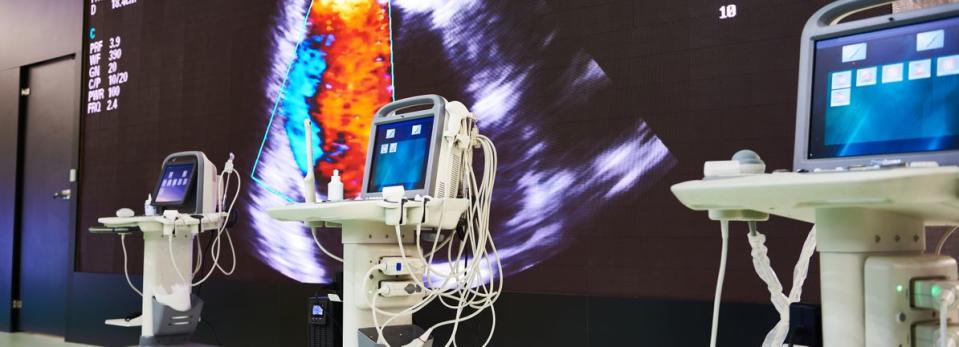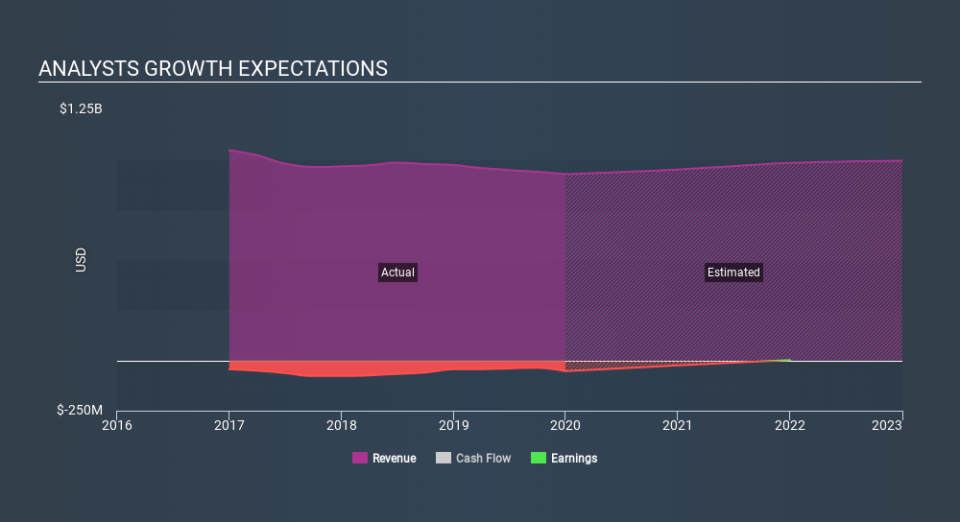Invacare Corporation Annual Results: Here's What Analysts Are Forecasting For Next Year

It's been a pretty great week for Invacare Corporation (NYSE:IVC) shareholders, with its shares surging 19% to US$9.19 in the week since its latest annual results. Revenues of US$928m arrived in line with expectations, although statutory losses per share were US$1.59, an impressive 31% smaller than what broker models predicted. Following the result, analysts have updated their earnings model, and it would be good to know whether they think there's been a strong change in the company's prospects, or if it's business as usual. Readers will be glad to know we've aggregated the latest statutory forecasts to see whether analysts have changed their mind on Invacare after the latest results.
See our latest analysis for Invacare
Taking into account the latest results, the most recent consensus for Invacare from four analysts is for revenues of US$950.8m in 2020, which is a satisfactory 2.5% increase on its sales over the past 12 months. Per-share statutory losses are expected to explode, reaching US$0.72 per share. Before this latest report, the consensus had been expecting revenues of US$965.7m and US$0.33 per share in losses. So there's definitely been a decline in analyst sentiment after the latest results, noting the pretty serious reduction to new EPS forecasts.
The consensus price target held steady at US$17.00, seemingly implying that the higher forecast losses are not expected to have a long term impact on the company's valuation. It could also be instructive to look at the range of analyst estimates, to evaluate how different the outlier opinions are from the mean. Currently, the most bullish analyst values Invacare at US$17.00 per share, while the most bearish prices it at US$17.00. The narrow spread of estimates could suggest that the business' future is relatively easy to value, or that analysts have a clear view on its prospects.
It can be useful to take a broader overview by seeing how analyst forecasts compare, both to the Invacare's past performance and to peers in the same market. One thing stands out from these estimates, which is that analysts are forecasting Invacare to grow faster in the future than it has in the past, with revenues expected to grow 2.5%. If achieved, this would be a much better result than the 6.3% annual decline over the past five years. By contrast, our data suggests that other companies (with analyst coverage) in a similar industry are forecast to see their revenue grow 7.9% per year. So although Invacare's revenue growth is expected to improve, it is still expected to grow slower than the market.
The Bottom Line
The most important thing to take away is that analysts reconfirmed their loss per share estimates for next year. Fortunately, analysts also reconfirmed their revenue estimates, suggesting sales are tracking in line with expectations - although our data does suggest that Invacare's revenues are expected to perform worse than the wider market. There was no real change to the consensus price target, suggesting that the intrinsic value of the business has not undergone any major changes with the latest estimates.
With that said, the long-term trajectory of the company's earnings is a lot more important than next year. We have estimates - from multiple Invacare analysts - going out to 2022, and you can see them free on our platform here.
You can also view our analysis of Invacare's balance sheet, and whether we think Invacare is carrying too much debt, for free on our platform here.
If you spot an error that warrants correction, please contact the editor at editorial-team@simplywallst.com. This article by Simply Wall St is general in nature. It does not constitute a recommendation to buy or sell any stock, and does not take account of your objectives, or your financial situation. Simply Wall St has no position in the stocks mentioned.
We aim to bring you long-term focused research analysis driven by fundamental data. Note that our analysis may not factor in the latest price-sensitive company announcements or qualitative material. Thank you for reading.

